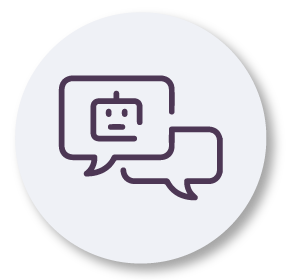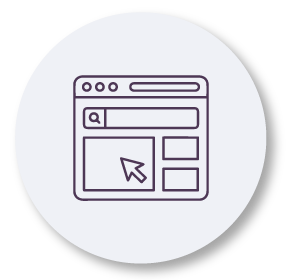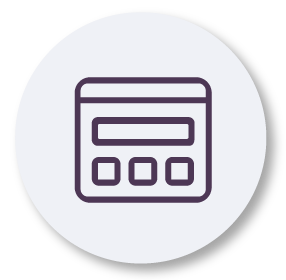5 Hot Trends in Web Development

Given the pace of technological advances over the last decade, calling this an exciting time for web development can seem rather meaningless. But the Covid-19 pandemic, and the huge impact it is having on the way we work, socialize and consume, really does make it an especially big year for developers.
Most significantly, the crisis has accelerated the digital revolution as businesses and organizations across all sectors scramble to reach customers in a socially distant world. Even when we find a way to contain and control the virus, we already know that some changes will likely be permanent. On top of this, the near-constant expansion of our technological capabilities means there are always new tools and opportunities for creative software/web development.
Against this backdrop, here are five hot trends in web development (and one bonus in web design) for the not-so-new normal:
Artificial Intelligence (AI) .png)
AI is not exactly new - it’s been a buzzword since the 1950s - but its practical application has exploded in recent years with the rise of big data and machine learning algorithms. It remains one of the hottest trends in web development and tech in general, with the great Covid-19 crisis making AI increasingly important tool helping organizations make sense of the upheaval in consumer and social behaviors. Indeed, as more human activity moves online, the tools we use to monitor and analyze these behavioral shifts are becoming more sophisticated and powerful, with important implications for web development. For example, AI could gather information about how users engage with a website and provide insight on how to optimize the layout and design. AI and machine learning (ML) can also assist developers with coding, fixing bugs, and quality assurance. In whatever manner, AI-enabled websites and applications are going to become increasingly standard over the coming years.
Smart Chatbots 
Within the broad AI field, one key trend affecting web development is the growing use of AI-powered chatbots. Indeed, Gartner estimates that by 2021, 15% of all customer service interactions globally will be handled by AI. If deployed effectively, these ‘smart’ chatbots can not only provide quick and accurate answers to specific customer queries but also offer personalized assistance. French cosmetics retailer Sephora was an early pioneer of using chatbots to guide the customer journey, offering customized tips and product reviews.
Arguably the most exciting frontier is the conversational agent: bots that attempt to mimic human interaction using learning techniques like Natural Language Processing (NLP). Mattress maker Casper’s Insomnobot 3000, which keeps restless people company between 11 pm and 5 am, is another early prototype that may seem gimmicky at first but allows the brand to engage with potential customers while the world sleeps. This year’s pandemic has also added urgency to the use of AI chatbots in healthcare, from providing information about symptoms and booking doctor’s appointments to assisting hospitals with triage and managing a patient’s long-term care.
Progressive Web Applications (PWA)
PWAs are software applications that can combine the best of the web and native apps (like mobile apps) to enhance the user experience (UX). Essentially, it is an app that can be accessed without having to be downloaded first. Or a website that looks and feels like an app. Whichever way you look at it, PWAs are not brand new (Google proposed them back in 2015), but they are becoming increasingly popular as users demand a better experience. Why? Because PWAs can deliver faster and smoother performance, even on unstable networks, while significantly boosting engagement. And that’s key to converting users into customers: India’s largest e-commerce platform Flipkart reported a 70% boost in its conversion rate after adding its PWA, Flipkart lite.
Some key PWA functionalities include mobile-first responsiveness, offline access, and push notifications. Since PWAs are served through web browsers, development costs are lower than for native apps, and there is no need to rely on third-party app stores. They also reduce the pain points associated with app maintenance and updates. With users unwilling to download countless native apps, either due to preference or mobile memory limits, PWAs could become the future of multi-platform development.
Additional note: Google’s Accelerated Mobile Pages (AMPs) are another development trend that, like PWAs, support significantly faster load times across mobile devices by prioritizing a stripped-down version of the content. With mobile-first design gradually becoming the standard and Google rewarding AMP sites in its search engine, this is another important consideration for developers.
Single Page Application (SPA) 
A single-page application (SPA) is a JavaScript-based web app that makes users feel like they’re browsing a single page for all their demands. It’s already used by tech giants such as Google (Gmail) and Facebook, but now it’s becoming increasingly popular in other sectors such as e-commerce, where accelerated digitization is forcing brands to seek a competitive edge online. SPAs are a natural fit for mobile and tablets while offering benefits such as streamlined development, increased speed, and reduced friction from multiple page loads. Issues with search engine optimization (SEO) have held back the spread of SPAs over the last few years, but as those wrinkles are ironed out it is expected to be a hot trend in web development.
This is one to keep your eye on. In December 2019, the World Wide Web Consortium (W3C) announced that WebAssembly (Wasm) would be the fourth official standard language for the web, joining HTML, CSS, and JavaScript. In fact, Wasm isn’t really a language itself but a binary format and a compilation target for other programming languages (like C/C++ and Rust). In other words, it’s a new encoding methodology for compiling these other languages into a low-level format that can enhance the performance of web applications by addressing some of the processing limitations of JavaScript. WebAssembly is designed to make things fast and safe, while it also maintains the version less, feature-tested, and backward-compatible nature of the web. Crucially, it marks another step towards bringing the native app experience to a cloud-based application. Though still relatively new and under development, WebAssembly could have a big impact on web development in the future.
Bonus: Dark Mode 
On the web design front, dark mode is already well established as a hot user interface (UI) trend and isn’t likely to disappear anytime soon. Dark mode (or night mode) is simply the reversal of the standard dark-on-light format that originally aimed to replicate the appearance of ink on paper. In dark mode, we have white/light text and elements on a black/grey background. This may bring back memories (for some of us) of the green-on-black color scheme of the first PCs, but today’s dark mode actually looks really good! And while it might seem like dark mode is all about aesthetics, there are some functional benefits for users. For example, it eases the strain on our eyes when we spend hours in front of a screen, especially in low-light conditions. It can also help preserve battery life, an important concern for all tablet and mobile users. With a dark mode option likely to be fully mainstream in most apps soon, organizations and their web developers will likely face new UI challenges and opportunities.
--
If you want to stay up to date with all the new content we publish on our blog, share your email and hit the subscribe button.
Also, feel free to browse through the other sections of the blog where you can find many other amazing articles on: Programming, IT, Outsourcing, and even Management.

With over +16 years of experience in the technology and software industry and +12 of those years at Jobsity, Santi has performed a variety of roles including UX/UI web designer, senior front-end developer, technical project manager, and account manager. Wearing all of these hats has provided him with a wide range of expertise and the ability to manage teams, create solutions, and understand industry needs. At present, he runs the Operations Department at Jobsity, creating a high-level strategy for the company's success and leading a team of more than 400 professionals in their work on major projects.
